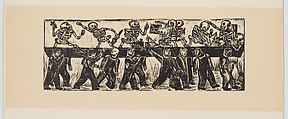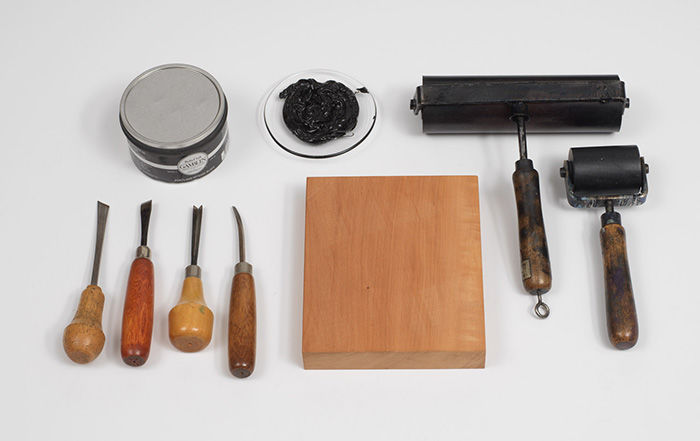Workers supporting skeletons on a beam (prostitute calaveras)
Everardo Ramírez Mexican
This print was created to illustrate a short text about intellectuals who had betrayed Mexico, for the magazine Frente a Frente (Head to Head) published by the League of Revolutionary Artists and Writers. The skeletons above represent reactionary figures who are being banished from Mexico by an awakening working class. At far left is the writer Alfonso Junco, a staunch supporter of the Spanish dictator Francisco Franco. Others include, toward center, the writer, philosopher, and progressive minister for education (1921–24) José Vasconcelos, who supported Nazi Germany and Franco in the 1930s, and, below him, the artist Dr. Atl (Gerardo Murillo), another ardent supporter of fascism.
Este grabado fue creado para la revista Frente a Frente, editada por la Liga de Escritores y Artistas Revolucionarios, en la que ilustraba un texto breve sobre los intelectuales que habían traicionado a México. Las calaveras de la parte superior representan a figuras reaccionarias que están siendo expulsadas de México por una clase trabajadora que comienza a despertar. En el extremo izquierdo vemos la calavera del escritor Alfonso Junco, un acérrimo defensor del dictador español Francisco Franco. En la zona central aparece el escritor, filósofo y ministro de educación progresista (1921-24) José Vasconcelos, que en la década de 1930 apoyó a la Alemania nazi y a Franco. Debajo de él se encuentra el artista Dr. Atl (Gerardo Murillo), otro ardiente simpatizante del fascismo.
Due to rights restrictions, this image cannot be enlarged, viewed at full screen, or downloaded.


